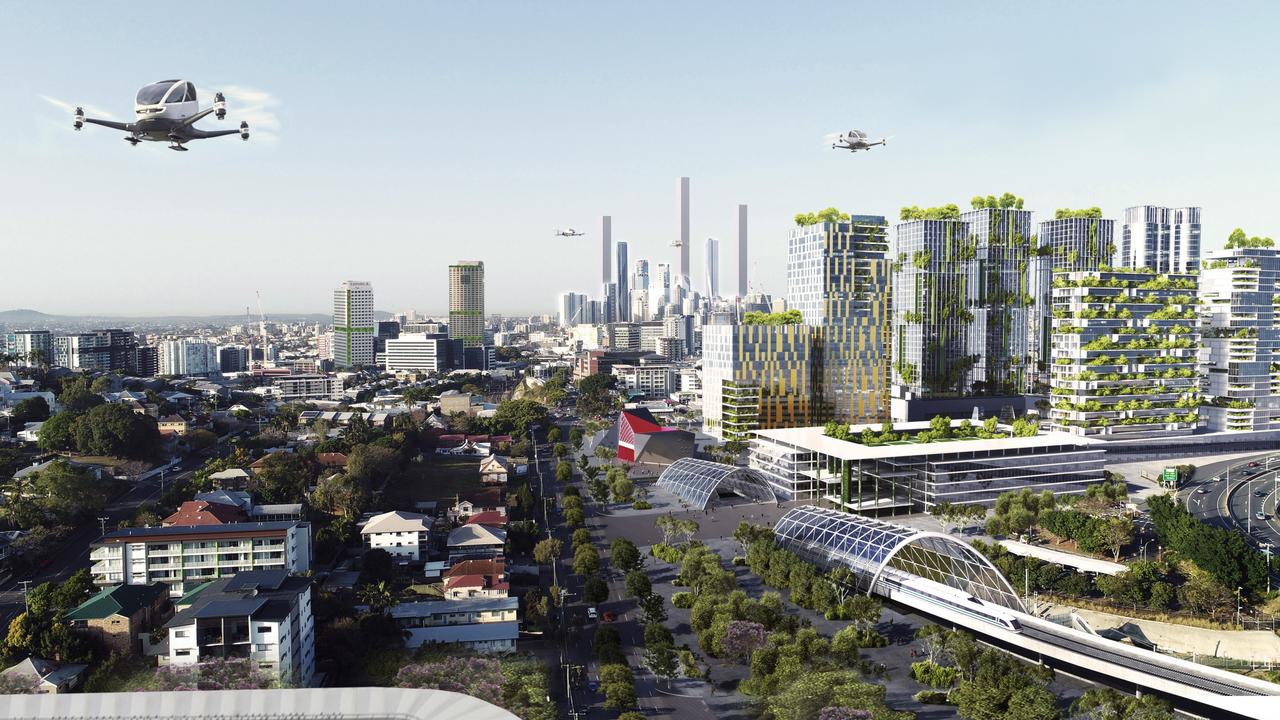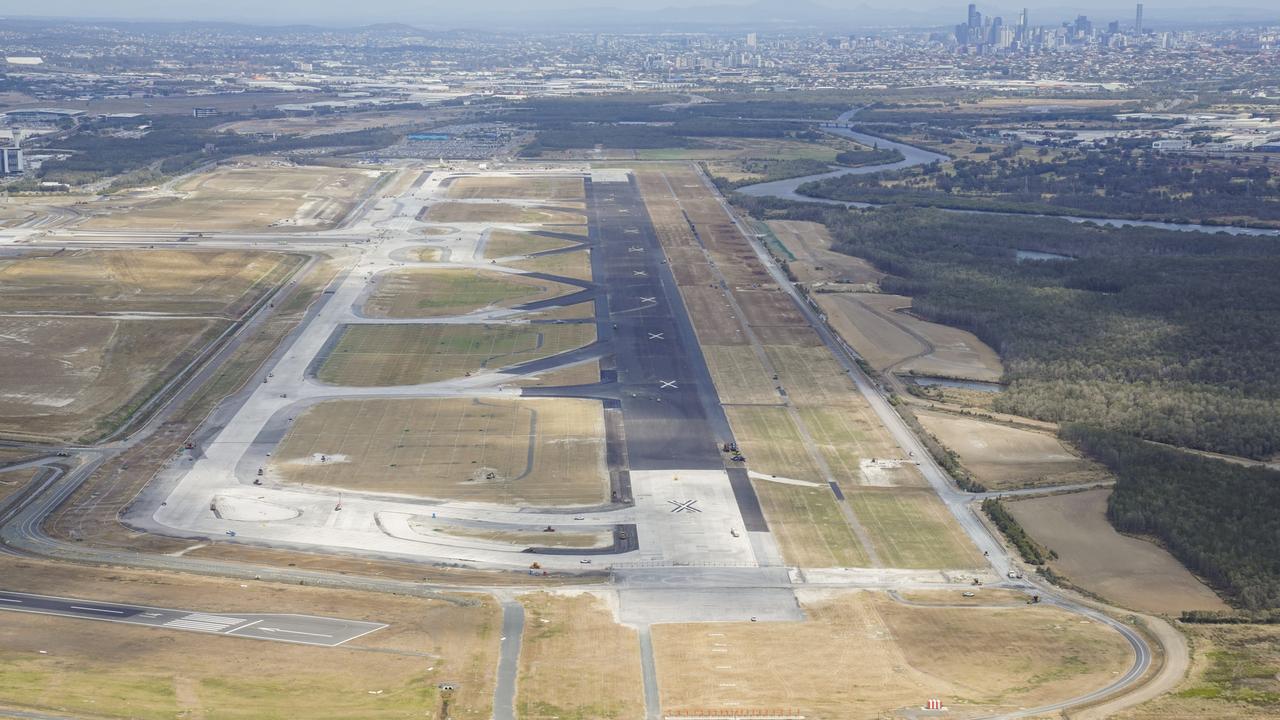Future SEQ: What south east Queensland will look like in 2043
A CITY almost twice the size of Brisbane will be added to southeast Queensland’s population by 2043, but that’s not the only big change that’s coming our way.
A CITY almost twice the size of Brisbane will be added to southeast Queensland’s population over the next quarter of a century.
Just over two million more people will live here, swelling the number from 3.5 million to 5.5 million – more than currently live in the entire state.
“The southeast Queensland of 2043 will be the same size as Sydney or Melbourne is today,” said leading demographer Bernard Salt who has conducted exclusive research for The Courier-Mail’s Future SEQ series.
“It is quickly emerging as Australia’s third global force and, as such, it will offer all the urban amenity and quality you would expect from an urban conurbation of that scale.
“And yet it is quite unlike any other city in the country.
$70B PLAN TO CUT COMMUTE TIMES
“Others are capital city-centric, like a fried egg with a big yolk in the centre and the white spreading outwards.
“Southeast Queensland is like the inside of a clock, with a big cog surrounded by several smaller cogs working together – the surrounding council areas in Greater Brisbane, the Gold and Sunshine Coasts and Toowoomba.
IS IT TIME TO RENAME SOUTHEAST QUEENSLAND?
“They are independent but connected. You can be part of a greater whole but not be swamped by a Los Angelian sprawl as you might get in Sydney.”
The series will run over the next fortnight exploring the opportunities and challenges ahead before developing an action plan to ensure an effective path forward for the region.
The Future SEQ series will culminate in a major lunch event on October 23 which will include Mr Salt as keynote speaker along with other infrastructure leaders.
GROWTH IS GREAT BUT WE HAVE TO LIVE HERE
The latest long-term population projections will be published by the Australian Bureau of Statistics next month. But on current trends, the southeast corner will grow by about 80,000 people every year – about twice the rate of OECD countries.
Accommodating the additional people will require 794,000 extra homes by 2043, and 954,000 more jobs will be needed.
Debbie Smith, the Brisbane managing partner of professional services firm PwC, which conducted exclusive research and analysis for the series, warned the surge of people would see “demands grow on current infrastructure and the natural environment, as well as placing pressure on the provision of services”.
“Population growth and urbanisation are likely to increase pressure on supplies of food and fresh water at a time when any change to the climate may make it harder to grow food crops in some regions.
“On the other hand, it presents significant opportunities to create smart, accessible, exciting cities with social and economic development and sustainable living.”
Density would be the “defining characteristic’’ of SEQ 25 years from now, Ms Smith said. “In inner-city areas, we expect to see super highrise buildings functioning as mini-cities and communities – no longer single-use buildings but vertical mixed-use developments incorporating any combination of uses from schools, retirement living, gyms, shops and commercial offices to residential apartments.
“Meanwhile, in our middle and outer ring suburbs, we will see a push towards the creation of 30-minute neighbourhoods, where residents can access the majority of their needs within a 30-minute trip, be it walking, cycling or public transport.
“In our outer ring areas, we will see more upscaled master-planned communities to accommodate population growth.”

Ms Smith said we were on the cusp of a “step change in transportation” – driven by connected and autonomous vehicles, electric vehicles and ridesharing.
“Other technologies are also set to have an impact such as drones and robotics that could revolutionise the movement of goods.”
Brisbane’s current population of 1.2 million will grow by 29 per cent to 1.5 million by 2043, but both the Gold Coast and Ipswich will add more people than the capital.
The Gold Coast will leap 427,000 (76 per cent) to about one million, with Ipswich more than tripling from 200,000 to 632,000. Both Moreton Bay and Logan will be larger than the Gold Coast is today. The Sunshine Coast will rise from 300,000 to 510,000 and Toowoomba from 134,000 to 180,000.
Mr Salt said the largest driver of population growth “will continue to be overseas migration” and Queensland is the only state with uninterrupted positive net interstate migration, including many overseas arrivals shifting here after periods in other states.
Asia will be an enormous influence in shaping SEQ’s future, through migration and economic opportunities.

At just 12 per cent, the proportion of people in the region with Asian heritage is about half that in Sydney (25 per cent) and Melbourne (21 per cent) and much lower than other Pacific Rim cities, including Vancouver, San Francisco, San Jose, Honolulu and Auckland.
“There is no logical reason southeast Queensland would remain at that low level going forward,” Mr Salt said.
The combined population of Asian cities with more than one million people has exploded. From 61 million in 1950, it is now 975 million and will hit 1.3 billion by 2030.
“The more developed, polluted and congested those cities become, the more attractive southeast Queensland becomes. China has 85 cities bigger than Adelaide,” Mr Salt said.
It is a similar picture in India which has grown from the world’s 12th largest economy a decade ago to fourth, just behind Japan now. Mr Salt predicts it will be third after the US and China by 2030. Increasing air connectivity and trading links to the two Asian giants and their rising wealth would be a major plank in SEQ’s future prosperity, he said. “It’s not the only one, but it’s a major driver and likely to increase.”


